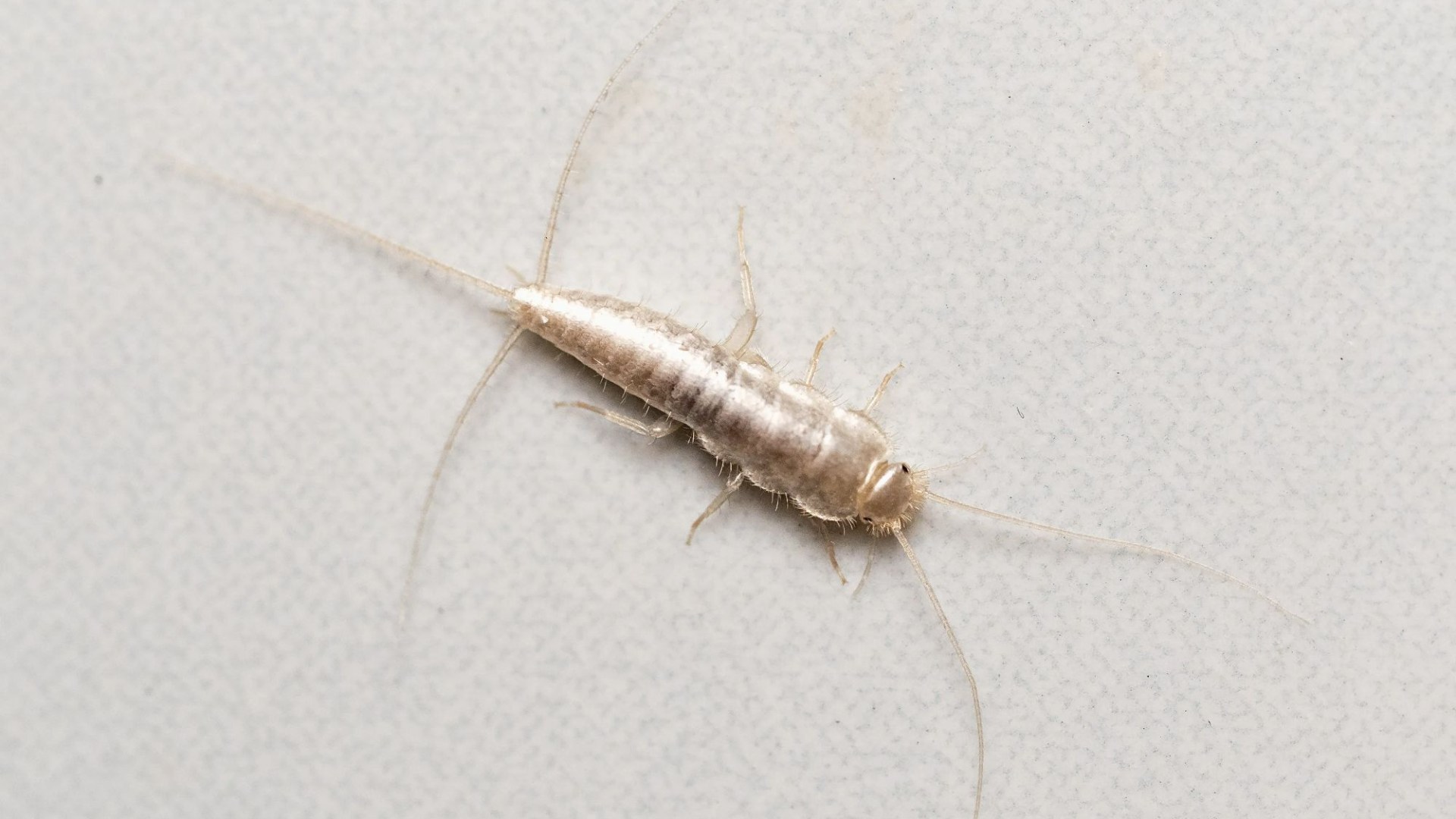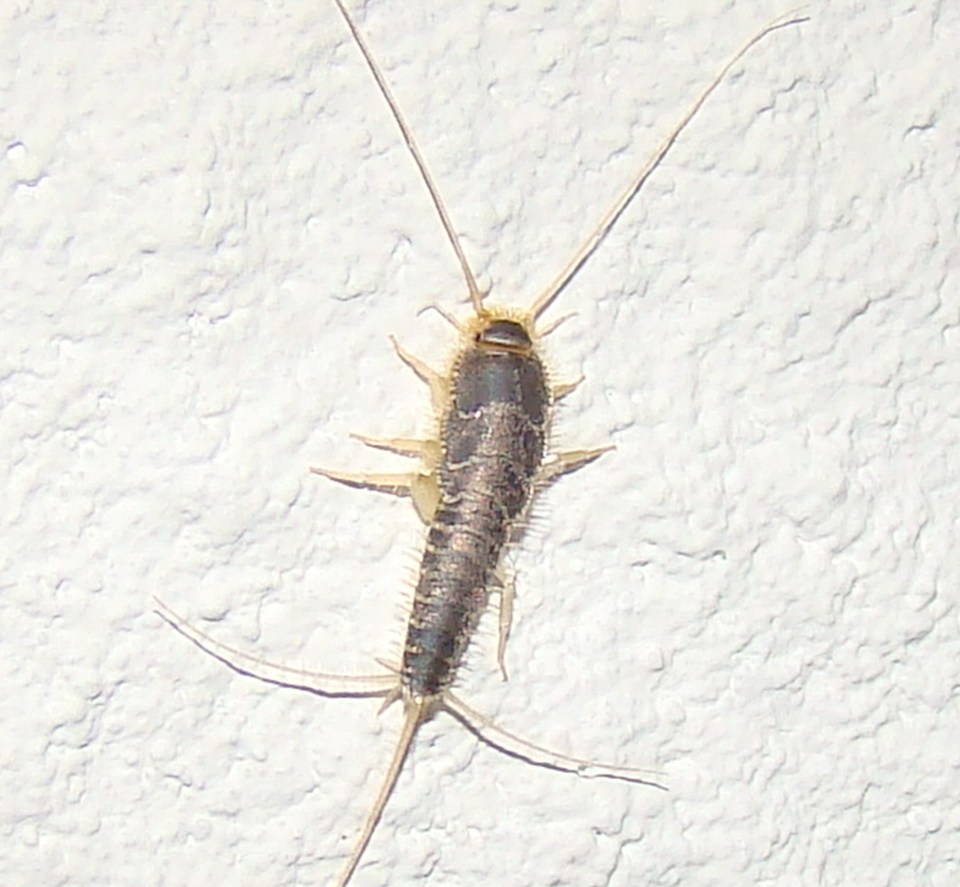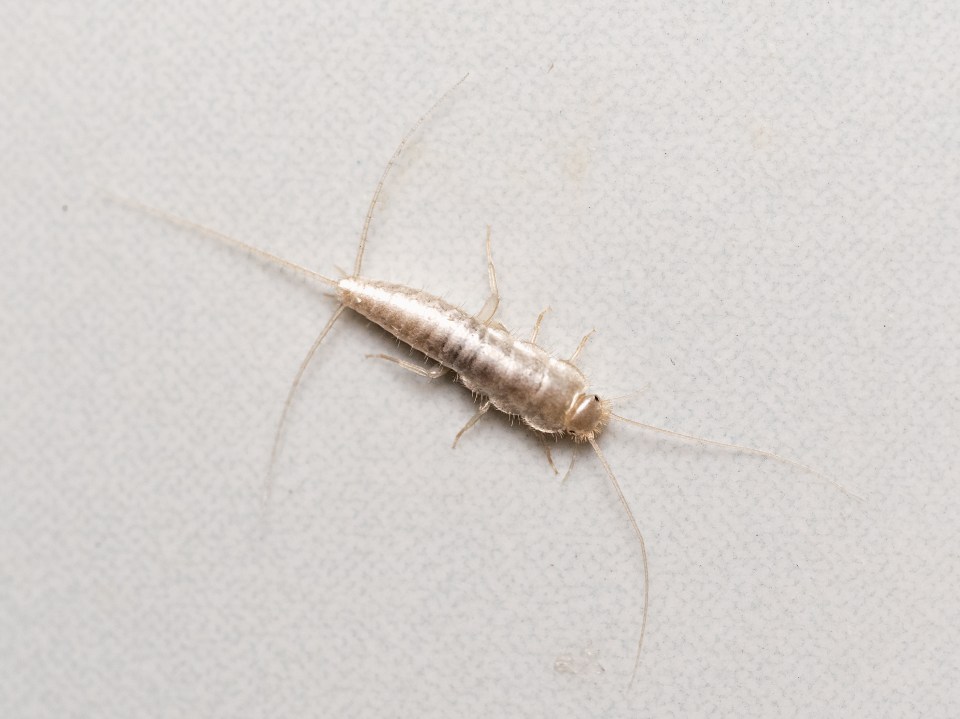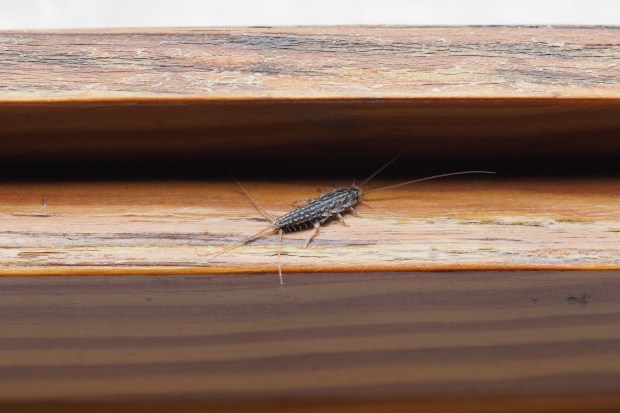Get rid of silverfish with a £1.49 hack they ‘hate the smell of’







NOW that autumn is here, it means one thing: it’s silverfish season.
Silverfish are small and difficult to spot, but these little silver insects can be lurking around your home, and if you spot them, you could be in for a big problem.
These shiny silver insects, shaped like a teardrop, thrive in moist conditions and love areas with water and moisture.
But if the thought of a silverfish scurrying along your bedroom floor sends shivers down your spine, fear not. We spoke to a pest control expert to find out how to banish them, and forever.
Fantastic pest controlMihail Velev, a pest controller, told Fabulous: “Adult silverfish are a wingless insect species that are about two centimeters long.
“These silvery pests have a shiny body with fine fish-like scales and two antennae at the front. It also has three brush-like attachments on the back of the body.
Read more Fantastic stories
“The reason they are called silverfish is because of their silvery bodies and the fish-like movements they make when they move.
“These pests are common throughout the world and even though they are generally harmless, they can still be unpleasant if they infest a home.”
Mihail explained that silverfish are most commonly found in attics, basements, bathtubs, sinks, kitchens, old books, classrooms and showers, all typical areas with high humidity and moisture.
The pest professional added: “This is because moisture provides them with favorable living conditions, as is the case with many other pests.
“Silverfish are known to feed on materials containing starch and can find food in water-damaged paper products, cardboard and even certain types of glues used in building materials.
“The most common time of year to find these pests in your home is generally autumn, as that’s when temperatures outside begin to drop and they start looking indoors for warmth and humidity.”
According to Mihail, you are more likely to see silverfish at night, he continued: “Silverfish are nocturnal pests. This is because they generally prefer dark spaces and hide in undisturbed corners or areas during the day and come out at night to forage for food.”
But Mihail claimed that while silverfish may not look friendly, they are not necessarily harmful.
These pests are common throughout the world and while they are generally harmless, they can still be unpleasant if they infest a home.
Mihail Velev
He claimed: “In most cases, silverfish are not harmful. They rarely bite and do not have the ability to pierce human skin due to their weak jaws.
“They are also not known to carry diseases or cause infections.
“However, sometimes they can cause allergic reactions and breathing problems, especially in people with pre-existing health problems.
“As a result, they are mainly just a nuisance and cannot harm anyone. However, keep in mind that they can contaminate your food if they leave their feces in the house. So make sure you start working on it on time.”
Living with silverfish

Abigail Wilson, a Senior Digital Writer at Fabulous, has revealed what it was really like living with silverfish when he was at university…
She said: “Moving to halls can be an exciting experience, full of new friendships and academic challenges.
‘However, it also brings with it a fair number of inconveniences.
“But while I thought that what I would make for dinner, or what I would miss at home, would be my biggest problems, it turned out that one of the most disturbing problems was the presence of silverfish.
“I remember the first time I ever saw one… I woke up and saw it running across my bedroom floor.
“It drove me crazy and from then on they seemed to pop up everywhere in my small room.
“For many students, silverfish are just a nuisance. These small, wingless insects are harmless to humans and pose no health risks.
“They tend to run away when the lights are on, making them an annoyance rather than a threat.
However, their presence can be unsettling. Just the thought of sharing your living space with these creepy crawlies can make even the most resilient student uneasy.
“The presence of silverfish often indicates larger problems with the cleanliness and maintenance of university accommodation – small, damp rooms are breeding grounds for these insects, and their presence can indicate problems such as leaks or inadequate cleaning.
“They may seem like a minor issue in the grand scheme of things, but I’ll certainly never forget it, and I’m grateful I haven’t seen one since (fingers crossed).”
How to get rid of it
If you’ve been seeing silverfish in your home and want to get rid of them, Mihail has shared everything you need to know.
He advised: “To get rid of silverfish, you generally need to take preventative measures. Keep your kitchen floors, countertops and cabinets clean.
“Wipe down all bookcases, cupboard shelves, and door and window frames.
“Dust any hidden areas, such as behind the oven, microwave, toaster and refrigerator. Clean up areas where you see silverfish and consider using a pest control spray to kill silverfish on contact if the infestation is severe.
They can contaminate your food if they leave their feces in your home
Mihail Velev
“In addition, because they are attracted to high humidity, consider installing and using exhaust fans in bathrooms, kitchens and other areas prone to high humidity, and using a dehumidifier to maintain optimal humidity between 40-60% to be retained.
“Repair any leaks immediately, seal all possible entry points such as cracks, holes and crevices in your walls, floors and around pipes, and remove any food sources for silverfish by storing your food items in airtight containers.
“Some other things you can use as natural silverfish repellents include diatoms Earthwhich you can sprinkle in areas where silverfish are present. It is a natural desiccant that dries out and kills them.
“Also consider using cedar-based products such as cedar logs or cedar oila natural repellent against silverfish.”
When dealing with silverfish, keep in mind that consistency is key and silverfish control requires ongoing efforts
Mihail Velev
Mihail also revealed the £1.49 purchase from The Range that they can’t resist – lavender oil – as he recommended: “You can also use essential oils with silverfish repellent properties, such as lavender, citrus or cinnamon.
“You can soak cotton balls in it and place them in infected areas.
“Another product you can use is boric acid powder, which you can apply to cracks, crevices and other possible hiding places. Boric acid is an effective insecticide that is relatively safe for humans and pets when used correctly.
What is the life cycle of a silverfish?

Mihail Velev, the pest controller at Fantastic Pest Control, told Fabulous:
“It usually takes four to six weeks for a silverfish to go from an egg to a nymph and then to an adult.
“The eggs usually hatch within three to six weeks and newly hatched silverfish basically look like adults, taking on the distinctive silver and shiny appearance within 40 days of hatching.
“They have a lifespan ranging from two to eight years and a female typically hatches up to 100 eggs during its lifetime, which equates to three to 20 eggs per day.
“This makes their presence difficult to detect immediately and they are often found in a home much later after arriving.”
“When dealing with silverfish, keep in mind that consistency is key and that silverfish control requires ongoing efforts.
‘Consistently apply preventive measures and monitor for signs of reinfection.
“Also discuss other possible pests. Silverfish may be attracted to areas where other pests occur, and addressing other pest problems can also help with silverfish control.”
But if you’ve tried everything and nothing seems to work, Mihail explains: “If there are a large number of silverfish in your home, the infestation persists and you are concerned about the health of yourself or someone else in your household, it is best to call for a professional pest control service.
“They can conduct a thorough inspection, identify the source of the contamination and apply targeted treatments.”








